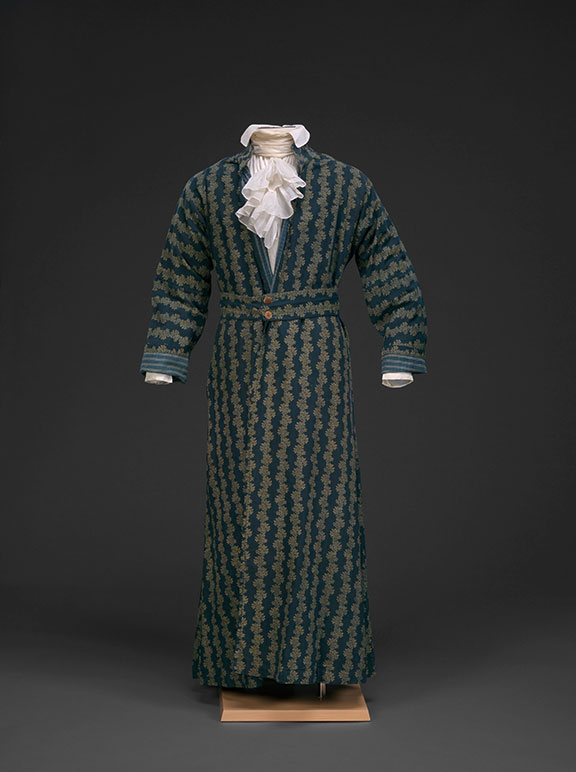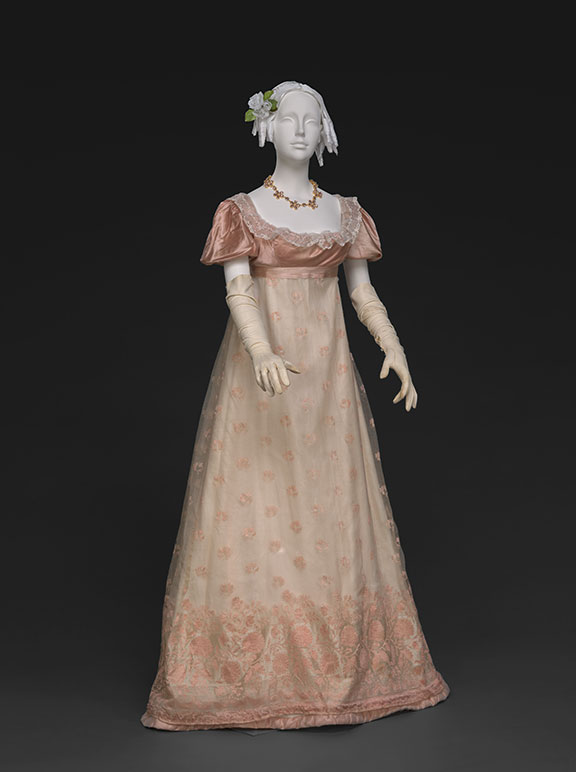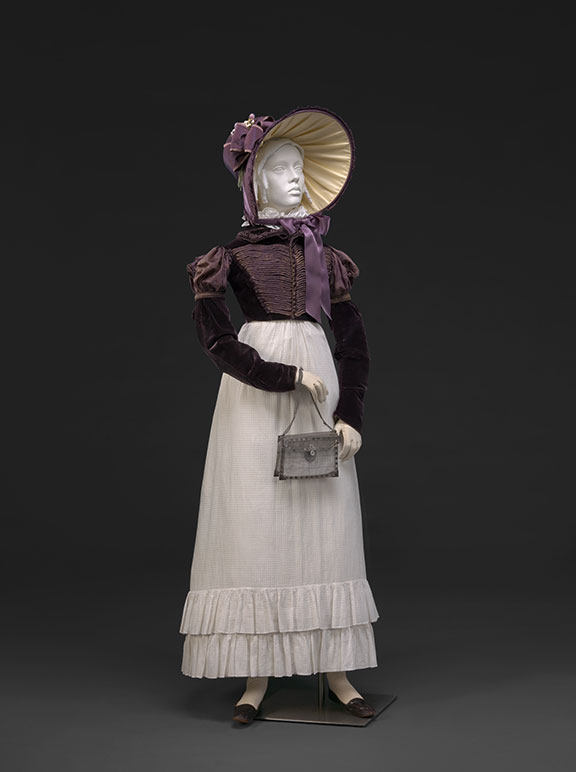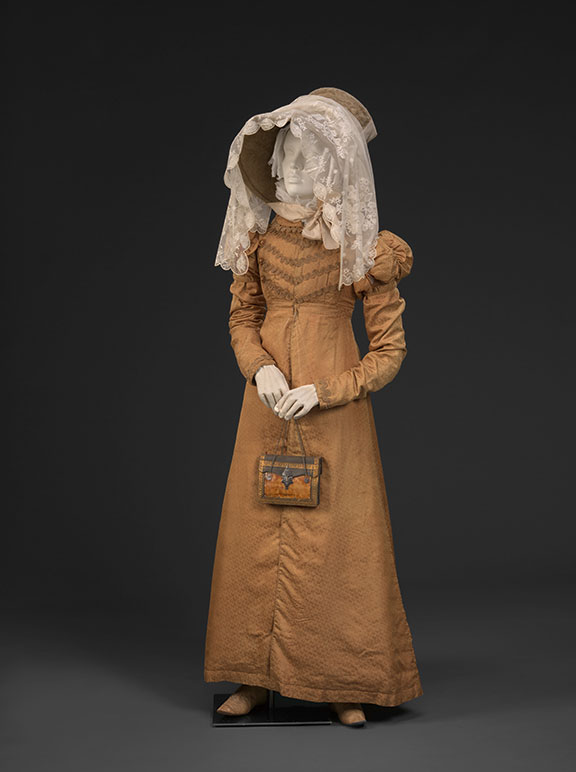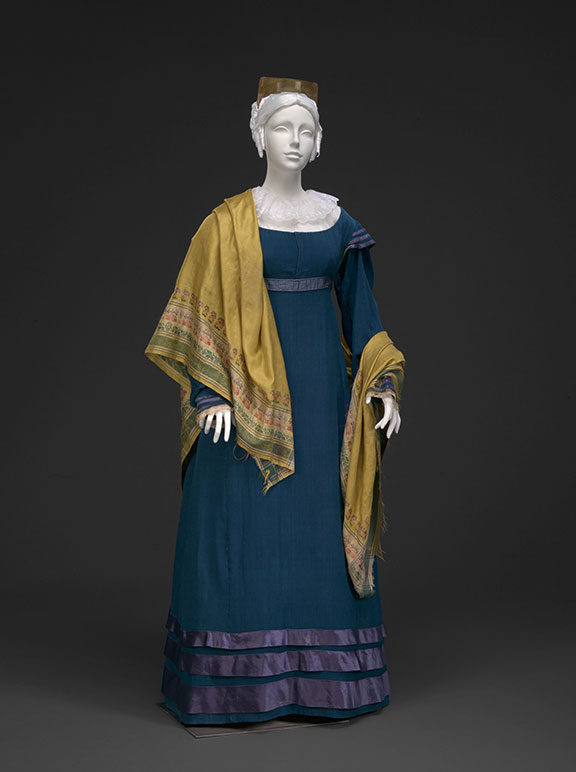Wrapping Gown or Banyan
1810s—1820s
Style: As a substitute for a fitted coat, a banyan would have been worn with all the other components of a gentleman’s outfit: shirt, stock or cravat, waistcoat, and breeches, trousers, or pantaloons according to the wearer’s taste. Slippers often replaced shoes to coordinate with both the informality and the vaguely Easter or Indian origins of the gown.
Banyans of “gowns” were appropriate for informal day wear at home, even when receiving guests. They were often associated with intellectual pursuits.
Fabric: This wrapping gown is made of a roller print typical of the earliest forays into the new technology. The small repeat and vertically meandering leafy vines were easily created by small cylinders, and only two colors were required. The indigo blue was printed first, with the leady design resist-printed so they would remain white. The yellow was then over-printed.
The gown is fully lined in tan, blue, and white woven checked cotton. It is the sort of fabric that could have been “homespun,” that is, woven in an American commercial establishment rather than imported.
Man’s “wrapping gown,” 1810s-1820s, private collection; linen shirt, 1780-1820, 2004.31, gift of Sandra Cook Bassett in honor of Pamela Rouse Wright; Linen stock, 1770-1810, 927, gift of Jane W.A. Laidly; reproduction waistcoat courtesy Michael Ramsay.

